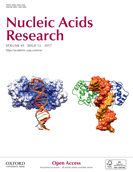
Publication I July 27, 2017
Alternative stable conformation capable of protein misinteraction links tRNA synthetase to peripheral neuropathy
While having multiple aminoacyl-tRNA synthetases implicated in Charcot-Marie-Tooth (CMT) disease suggests a common mechanism, a defect in enzymatic activity is not shared among the CMT-causing mutants. Protein misfolding is a common hypothesis underlying the development of many neurological diseases. Here, we study the structural effect of three CMT-causing mutations in tyrosyl-tRNA synthetase (TyrRS or YARS). Through various approaches, we found that the mutations do not induce changes in protein secondary structures, or shared effects on oligomerization state and stability. However, all mutations provide access to a surface masked in the wild-type enzyme. SAXS measurements suggest that an inherent plasticity, engendering the formation of alternative stable conformations capable of aberrant interactions, links the tRNA synthetase family to CMT. These results could be confirmed with sizing measurements using the switchSENSE® technology.
The switchSENSE® technology can monitor protein size in solution by assessing the hydrodynamic radius. Hereby, a switching motion of DNA levers is triggered by alternating the voltage across the electrode surface and is tracked in real time through a fluorescence probe attached to the DNA. Size and shape of proteins attached to the DNA slow down the motion of nanolevers according to their hydrodynamic radius. In contrast to effortful SAXS measurements, hydrodynamic radii of mutant and wild-type constructs of TyrRS could be determined and compared with a single-day-experiment using the switchSENSE® technology.
Nucleic Acids Research